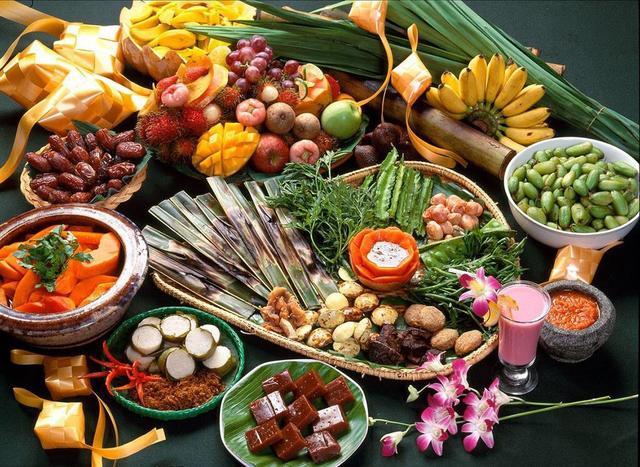
Malaysian cuisine is a melting pot of culinary influences, including Malay, Chinese, Indian, and indigenous traditions. This diverse heritage results in a rich and flavorful cuisine, with key ingredients that reflect its varied roots:
- Rice: As a staple in Malaysian cuisine, rice is used in various dishes such as Nasi Lemak, Hainanese Chicken Rice, and Nasi Goreng.
- Coconut: Coconut milk (santan) is widely used in curries, desserts, and soups. Grated coconut is also used in dishes like Kerabu and desserts like Ondeh-Ondeh.
- Spices: Malaysian cuisine is known for its use of spices, such as coriander, cumin, fennel, turmeric, cardamom, cloves, star anise, and cinnamon. These spices are often combined in spice pastes or curry powders.
- Chilies: Both fresh and dried chilies are used to add heat to Malaysian dishes. Sambal, a spicy condiment made from chilies, garlic, shallots, and other ingredients, is a common accompaniment to many dishes.
- Belacan: A fermented shrimp paste used as a flavoring agent in many Malaysian dishes, such as Sambal Belacan, Kangkung Belacan, and Asam Pedas.
- Lemongrass: This fragrant herb is often used in Malaysian curries, soups, and marinades, imparting a distinct citrusy flavor.
- Tamarind: Tamarind paste, extracted from the fruit’s pulp, is used to add a tangy, sour taste to dishes like Assam Laksa and Ayam Masak Merah.
- Galangal: A root from the ginger family, galangal has a unique, earthy flavor and is used in dishes like Rendang and Laksa.
- Kaffir lime leaves: These aromatic leaves add a distinctive citrusy flavor to Malaysian dishes like Tom Yam and Nyonya Curry.
- Palm sugar: A natural sweetener made from the sap of palm trees, palm sugar is used in a variety of Malaysian desserts and sauces.
- Soy sauce and oyster sauce: Influenced by Chinese cuisine, soy sauce and oyster sauce are common ingredients used to add umami and depth of flavor to dishes like Char Kway Teow and Hokkien Mee.
- Fish sauce: Borrowed from Thai cuisine, fish sauce is used in some Malaysian dishes to add a salty, savory taste.
- Curry leaves: Often used in Indian-influenced Malaysian dishes, curry leaves add a distinctive, aromatic flavor to curries and stir-fries.
These key ingredients, along with a variety of meats, seafood, vegetables, and fruits, contribute to the unique and flavorful profile of Malaysian cuisine.